Abstract
One of the earliest written references to prosthetics is found in a book published in France in 1579. That year, French surgeon Ambroise Paré (1510–1590) published his complete works, part of which described some of the artificial limbs he fitted on his amputees. As a military surgeon, Paré had removed many a soldier's shattered arm or leg, and he eventually began designing and building artificial limbs to help the men who had been maimed.
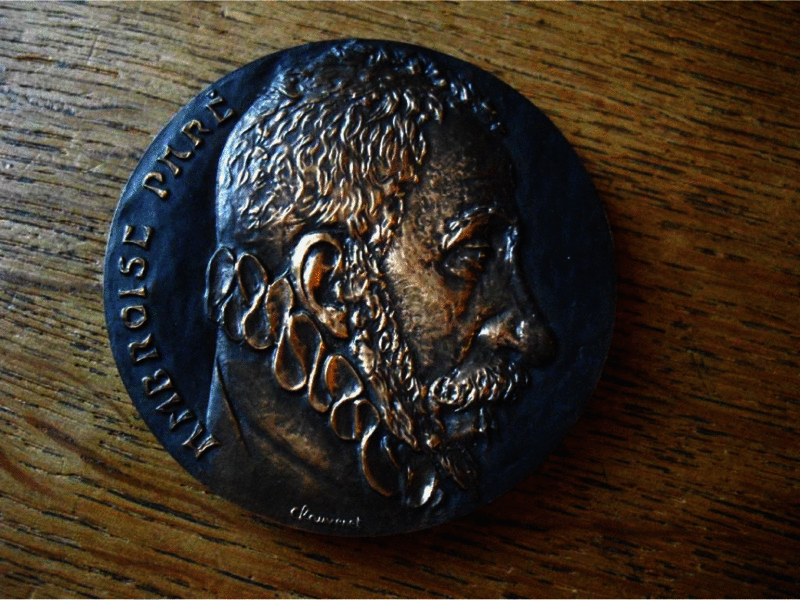 Ambroise Paré was the official royal surgeon to four successive kings, and earned his position by practicing medicine on the battlefield, attempting to save, or at least treat, wounded soldiers. As a doctor, he was most disturbed by the reaction of some of the people whom he had saved. He found that some soldiers took their own lives rather than live without limbs, or with terrible wounds. To try to combat this problem, Paré began crafting artificial limbs. This was not new. There is evidence for the use of prostheses from the times of the ancient Egyptians. Prostheses were developed for function, cosmetic appearance and a psycho-spiritual sense of wholeness. Amputation was often feared more than death in some cultures. It was believed that it not only affected the amputee on earth, but also in the afterlife. The ablated limbs were buried and then disinterred and reburied at the time of the amputee’s death so the amputee could be whole for eternal life. One of the earliest examples comes from the 18th dynasty of ancient Egypt in the reign of Amenhotep II in the fifteenth century B.C. A mummy in the Cairo Museum has clearly had the great toe of the right foot amputated and replaced with a prosthesis manufactured from leather and wood. The first true rehabilitation aids that could be recognised as prostheses were made during the civilisations of Greece and Rome. During this period, prostheses for battle and hiding deformity were heavy, crude devices made of available materials—wood, metal and leather. Records of ancient prosthesis can be found all over the world. Legend holds that Roman general Marcus Sergius wore an iron replacement hand during the Second Punic War. During the European mediaeval period, armoured knights used iron prosthetics to conceal lost limbs. Some pirates actually did wear crudely fashioned hooks and peg legs.
Ambroise Paré was the official royal surgeon to four successive kings, and earned his position by practicing medicine on the battlefield, attempting to save, or at least treat, wounded soldiers. As a doctor, he was most disturbed by the reaction of some of the people whom he had saved. He found that some soldiers took their own lives rather than live without limbs, or with terrible wounds. To try to combat this problem, Paré began crafting artificial limbs. This was not new. There is evidence for the use of prostheses from the times of the ancient Egyptians. Prostheses were developed for function, cosmetic appearance and a psycho-spiritual sense of wholeness. Amputation was often feared more than death in some cultures. It was believed that it not only affected the amputee on earth, but also in the afterlife. The ablated limbs were buried and then disinterred and reburied at the time of the amputee’s death so the amputee could be whole for eternal life. One of the earliest examples comes from the 18th dynasty of ancient Egypt in the reign of Amenhotep II in the fifteenth century B.C. A mummy in the Cairo Museum has clearly had the great toe of the right foot amputated and replaced with a prosthesis manufactured from leather and wood. The first true rehabilitation aids that could be recognised as prostheses were made during the civilisations of Greece and Rome. During this period, prostheses for battle and hiding deformity were heavy, crude devices made of available materials—wood, metal and leather. Records of ancient prosthesis can be found all over the world. Legend holds that Roman general Marcus Sergius wore an iron replacement hand during the Second Punic War. During the European mediaeval period, armoured knights used iron prosthetics to conceal lost limbs. Some pirates actually did wear crudely fashioned hooks and peg legs.
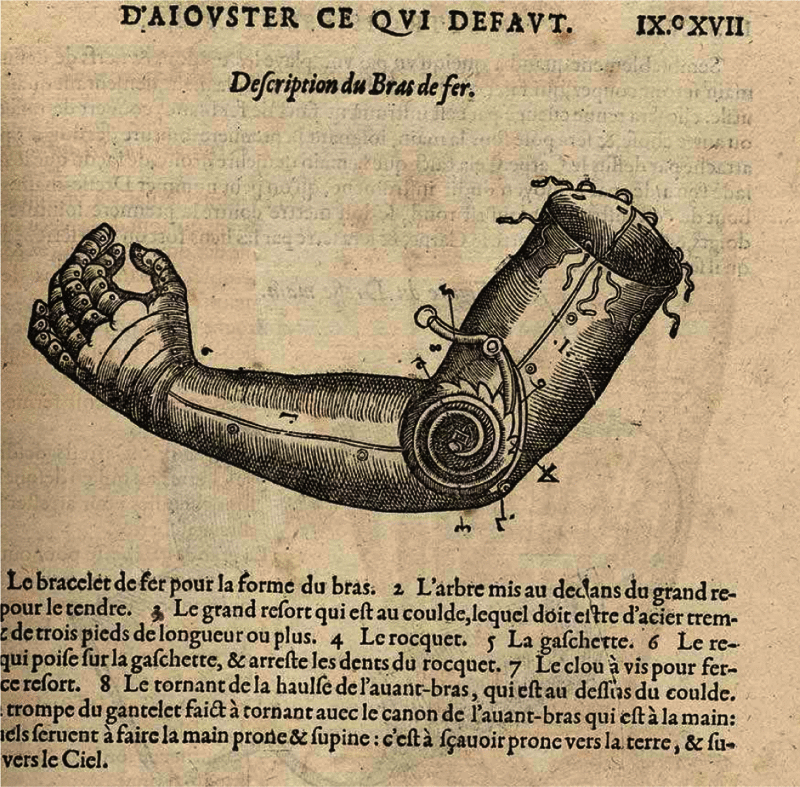
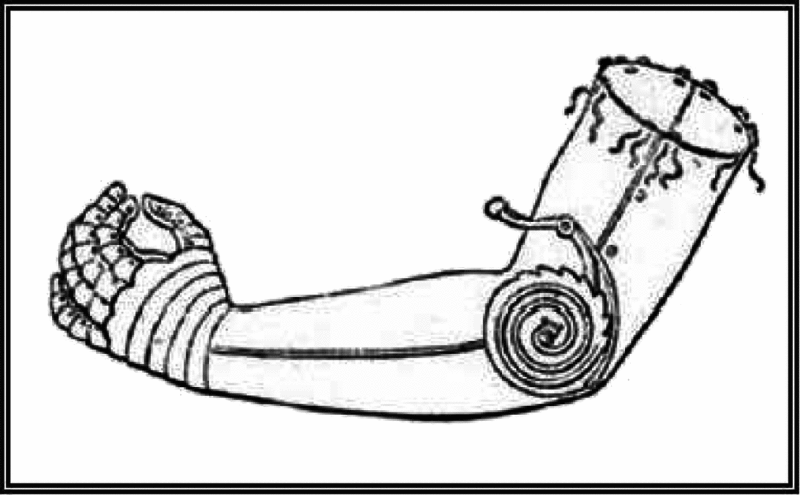
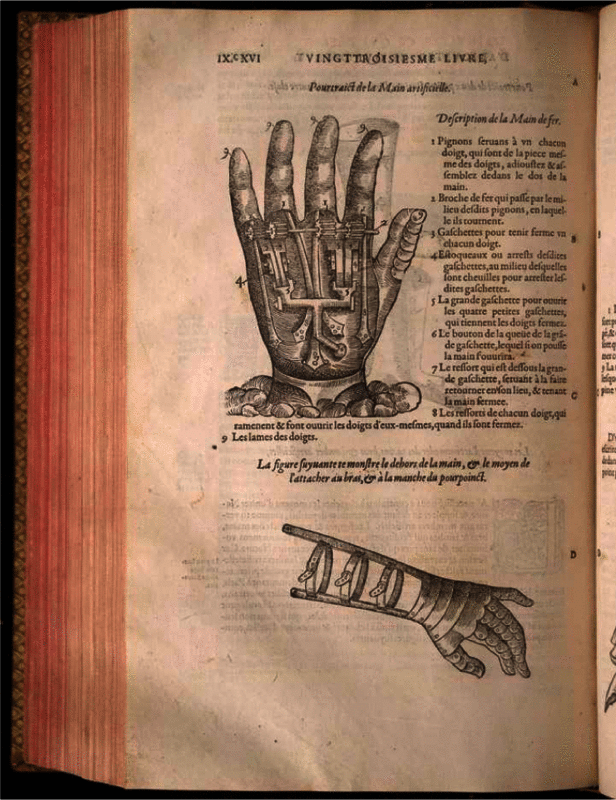 Paré's limbs were something different. He wanted them to be functional, not just stop-gap solutions. He was an accomplished anatomist, and so when he designed limbs, he attempted to make them work the way biological limbs worked. When he designed legs, he gave them a mechanical knee that could be locked when standing and bent at will. He drew up preliminary sketches of an arm that could be bent with a pulley that mimicked arm muscles. Paré had the idea to use the progress in robotics that occurred in his period to create prostheses that worked with the mechanical devices invented for robotic toys or clocks. In China, King-his Tse, invented in the 500 b. C. a flying magpie of wood and bamboo, and a wooden horse able to jump. Around year 200 B.C., Philo of Byzantium, inventor of the repetitive catapult, constructed an aquatic robot. In 206 B.C., the first Han Emperor found the Chin Shih Hueng Ti's treasure. It included a mechanical toy orchestra that moved independently. In old Greece, Archytas of Tarento (referenced in English as Archytas of Tarentum, and in some references in Spanish as Architas de Tarento), philosopher, mathematician and contemporary politician of Plato, considered the father of mechanical engineering and precursory of the robotics, invented the screw and the pulley, among other many devices. The materials used for the construction of robots were wood (parts with form), iron (fixed structure, supports, hinges), copper (which is mouldable and allowed the construction of thinner parts), leather (cables, footwear) and fabrics. The first models used the application of direct force to make movements, facilitated with sets of pulleys, gears and handles. In this phase the robots were replicas of the human being that made a series of simple movements. The machines began assuming tasks of aid to the man and ended up repelling their conception of the world and animated beings. The mechanics affected the study of nature, spreading to the anatomy science; of which agreed models with that conception were elaborated, such as “De Humani Corporis Fabrica” (On the workings of the human body) from Andreas Vesalius (1514–1564) who conceived the man as a complex mechanical structure.
Paré's limbs were something different. He wanted them to be functional, not just stop-gap solutions. He was an accomplished anatomist, and so when he designed limbs, he attempted to make them work the way biological limbs worked. When he designed legs, he gave them a mechanical knee that could be locked when standing and bent at will. He drew up preliminary sketches of an arm that could be bent with a pulley that mimicked arm muscles. Paré had the idea to use the progress in robotics that occurred in his period to create prostheses that worked with the mechanical devices invented for robotic toys or clocks. In China, King-his Tse, invented in the 500 b. C. a flying magpie of wood and bamboo, and a wooden horse able to jump. Around year 200 B.C., Philo of Byzantium, inventor of the repetitive catapult, constructed an aquatic robot. In 206 B.C., the first Han Emperor found the Chin Shih Hueng Ti's treasure. It included a mechanical toy orchestra that moved independently. In old Greece, Archytas of Tarento (referenced in English as Archytas of Tarentum, and in some references in Spanish as Architas de Tarento), philosopher, mathematician and contemporary politician of Plato, considered the father of mechanical engineering and precursory of the robotics, invented the screw and the pulley, among other many devices. The materials used for the construction of robots were wood (parts with form), iron (fixed structure, supports, hinges), copper (which is mouldable and allowed the construction of thinner parts), leather (cables, footwear) and fabrics. The first models used the application of direct force to make movements, facilitated with sets of pulleys, gears and handles. In this phase the robots were replicas of the human being that made a series of simple movements. The machines began assuming tasks of aid to the man and ended up repelling their conception of the world and animated beings. The mechanics affected the study of nature, spreading to the anatomy science; of which agreed models with that conception were elaborated, such as “De Humani Corporis Fabrica” (On the workings of the human body) from Andreas Vesalius (1514–1564) who conceived the man as a complex mechanical structure.
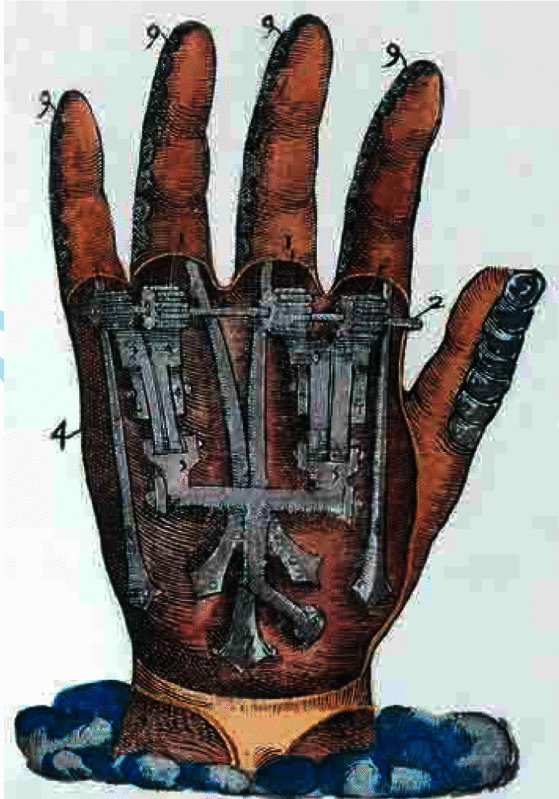 His stand-out design was a mechanical hand. It was a hand that was operated by multiple catches and springs, which simulated the joints of a biological hand. His ‘Le Petit Lorrain’, a mechanical hand operated by catches and springs, was worn by a French Army captain in battle. When he showed his design to colleagues it was such a sensation that they worked up a prototype, and in 1551, a movable prosthesis was worn into battle by a French army captain. The captain claimed it worked so well that he was able to grip and release the reins of his horse.
His stand-out design was a mechanical hand. It was a hand that was operated by multiple catches and springs, which simulated the joints of a biological hand. His ‘Le Petit Lorrain’, a mechanical hand operated by catches and springs, was worn by a French Army captain in battle. When he showed his design to colleagues it was such a sensation that they worked up a prototype, and in 1551, a movable prosthesis was worn into battle by a French army captain. The captain claimed it worked so well that he was able to grip and release the reins of his horse.
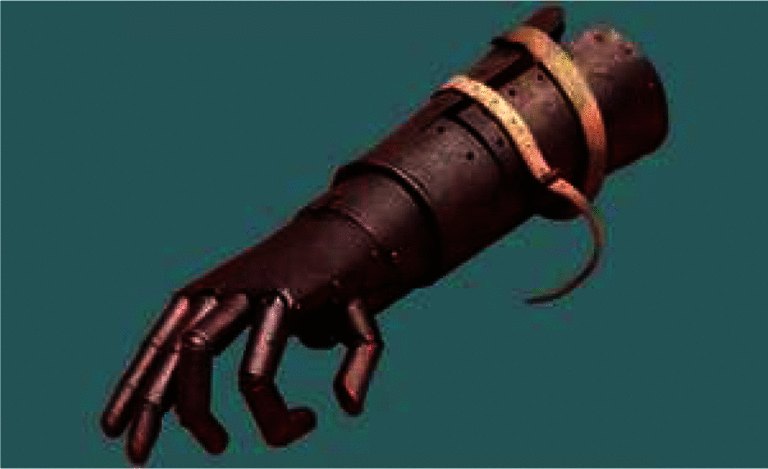
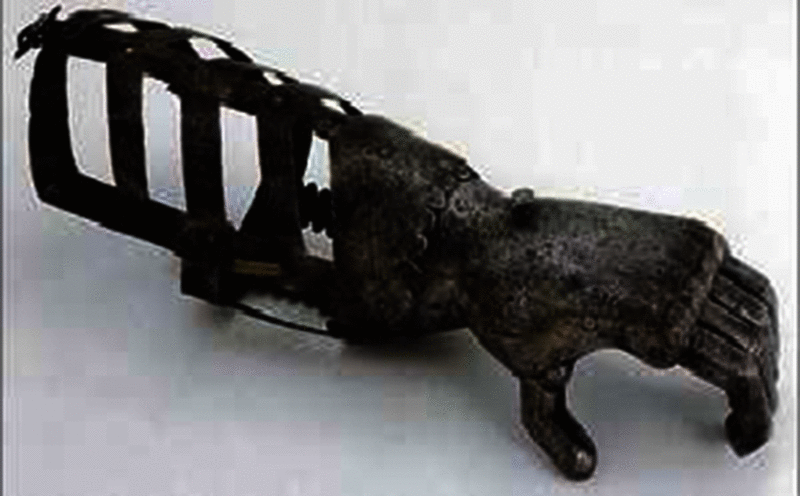
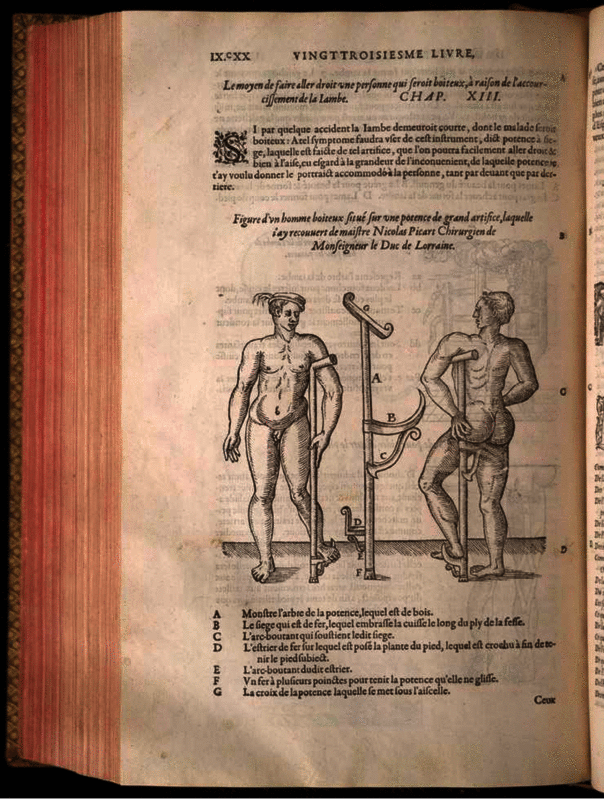 Subsequent refinements in medicine, surgery and prosthetic science greatly improved amputation surgery and the function of prostheses. People have used all sorts of artificial devices probably from the beginnings of human history to help them compensate for the loss of a limb. Thus in very ancient times, the first and simplest prosthesis may have been a forked tree that was used as a crutch to help someone walk whose leg may have been badly damaged or lost in an accident or to a disease. What began as a modified crutch with a wooden or leather cup and progressed through many metamorphoses has now developed into a highly sophisticated prosthetic limb made of space-age materials.
Subsequent refinements in medicine, surgery and prosthetic science greatly improved amputation surgery and the function of prostheses. People have used all sorts of artificial devices probably from the beginnings of human history to help them compensate for the loss of a limb. Thus in very ancient times, the first and simplest prosthesis may have been a forked tree that was used as a crutch to help someone walk whose leg may have been badly damaged or lost in an accident or to a disease. What began as a modified crutch with a wooden or leather cup and progressed through many metamorphoses has now developed into a highly sophisticated prosthetic limb made of space-age materials.
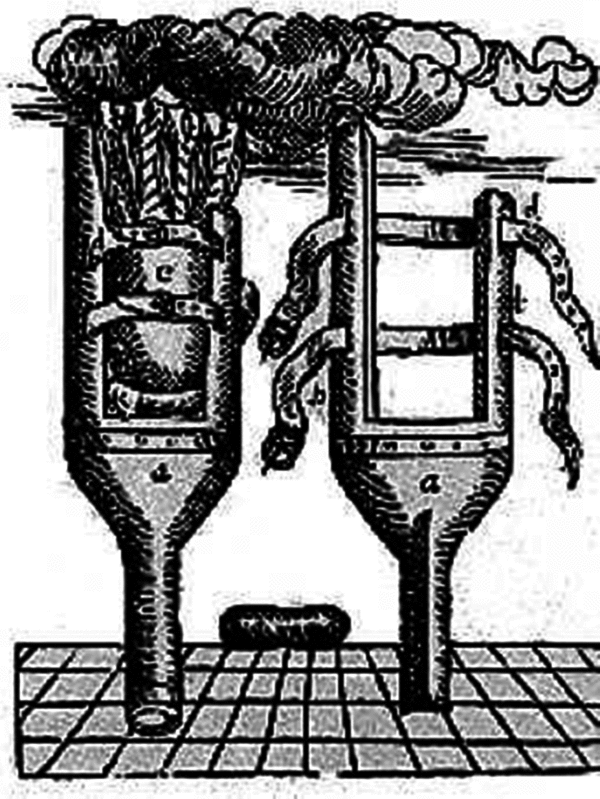
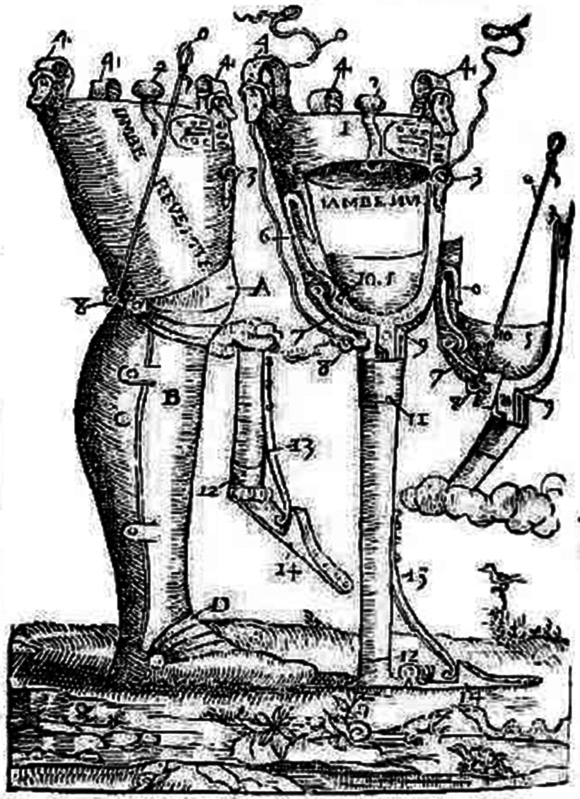 Such were the materials available to Ambroise Paré who invented both upper-limb and lower-limb prostheses.
Such were the materials available to Ambroise Paré who invented both upper-limb and lower-limb prostheses.


